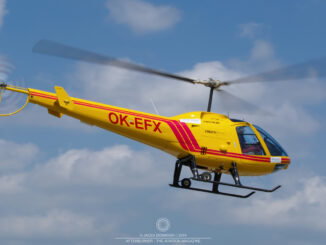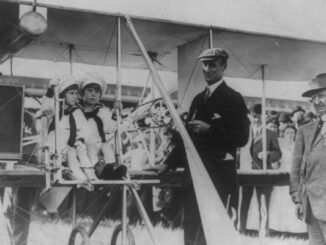 18th June 2024 marked forty-one years since Sally Kristen Ride flew into space aboard the Space Shuttle Challenger, thus becoming the first American woman in space.
18th June 2024 marked forty-one years since Sally Kristen Ride flew into space aboard the Space Shuttle Challenger, thus becoming the first American woman in space.
On 16th January 1978, NASA publicly announced names of the Astronaut Group 8 candidates, the first new group of astronauts since 1969. Expanding the recruitment to include scientists and engineers which came with the commencement of the NASA Space Shuttle programme, had – for the first time in the American history – opened the opportunity for women to become astronauts.
Therefore, among thirty-five candidates within the Class of 1978, there were six women: Anna L. Fisher, Shannon W. Lucid, Judith A. Resnik, Sally K. Ride, Rhea Seddon and Kathryn D. Sullivan. Nevertheless, that astronaut class was unique for a few more reasons. Among the ´Thirty-Five New Guys´, as the group was known otherwise, were not only women, but also the first African-American, the first Asian-American and the first Jewish-American astronauts.
However, speaking of NASA’s first female candidates for astronauts, it is worth adding some words of context at this point. In fact, the six women who were among Astronaut Group 8 were not actually NASA’s first ever potential female astronaut candidates. Years earlier, William Randolph Lovelace, who helped develop tests for the first astronauts of NASA’s Mercury Programme in the early 1960s, selected a group of women and then conducted research on them.
Nevertheless, at the time, women were never officially considered by NASA as candidates for astronaut training, therefore the tests were conducted in Lovelace’s private clinic.
Regrettably, even though the selected women achieved great results in the Lovelace’s tests, their chance to reach the stars was soon blocked. The US Navy refused to give the Fellow Lady Astronaut Trainees (FLAT) further access to the testing facilities at the Naval School of Aviation Medicine in Pensacola, Florida. The reason for the refusal was said to be the lack of an official request from NASA.

The FLATs fought the refusal for further testing to become astronauts. In July of 1962, their case even became a subject of a special Subcommittee of the House Committee on Science and Astronautics. Despite of that, the US women were never granted the opportunity to fly in space, just until the already mentioned Astronaut Group 8 chosen in 1978.
Shortly after completing their training, all the Astronaut Class of 1978 members received ground and flight assignments. Sally K. Ride was initially entrusted the role of CAPCOM (Capsule Comunicator) for STS-2 (conducted in late 1981) and STS-3 (in early 1982) missions. In the meantime, she trained with the shuttle’s robotic arm, soon becoming an expert in operating that device.
On 30th April 1982, she was assigned as Mission Specialist to the crew of the Space Shuttle Challenger on the STS-7 mission. The crew also included Commander Robert L. Crippen, Pilot Frederick H. ‘Rick’ Hauck, and Mission Specialist John M. Fabian. In January of 1983, physician-astronaut Norman E. Thagard was added to the crew, with a task to conduct in-flight studies of space motion sickness during the mission. Interesting fact is that, at that time, about one-third to even a half of people who flew into space was affected by that nausea. Eventually, the STS-7 mission crew consisting of five astronauts was to date the largest one to fly in a single spacecraft.
The STS-7 mission began on 18th June 1983, at 7:33:00 a.m. EDT (11:33 a.m. UTC), when Space Shuttle Challenger lifted off from Launch Complex 39A at Kennedy Space Center, Florida. The main objective of the mission was to deploy in space two commercial communications satellites – ANIK C-2 for TELESAT Canada and PALAPA-B1 for PT Indonesian Satellite Corporation – both attached to Payload Assist Module-D (PAM-D) motors.

Additionally, seven Get Away Canisters were placed in the payload bay of the shuttle, each of them containing various experiments, such as the one investigating the effects of space on the social behaviour of ant colonies placed in microgravity. Ten more experiments were also installed on the Shuttle Pallet Satellite (SPAS-1) to study the formation of metal alloys in microgravity and the use of remote sensing scanner.
The experiments related to the SPAS-1 were conducted by Sally Ride who deployed it in space using the Shuttle’s robotic arm. She then retrieved the pallet satellite into the Challenger payload bay two days later to bring it back to Earth. By the way, that was the first time, when the Shuttle returned another spacecraft to Earth. While the experiment was underway, the SPAS-1 satellite also took a few great photos of the Challenger orbiter, when both spacecraft were flying side by side. Research on space sickness nausea was carried out by physician-astronaut, Norman E. Thagard. Other payloads and experiments carried out during the STS-7 mission were Office of Space and Terrestrial Applications-2 (OSTA-2); Continuous Flow Electrophoresis System (CFES); Monodisperse Latex Reactor (MLR) and Shuttle Student Involvement (SSIP) experiment.
Initially, the Space Shuttle Challenger with the STS-7 mission had to be the first ever to land on the runway of Shuttle Landing Facility, being part of the Kennedy Space Center. However, adverse weather conditions in Florida resulted in diversion of the orbiter landing to Edwards Air Force Base in California.
The Challenger with the STS-7 mission crew, including the first American woman in space on board, returned to Earth on 24th June 1983, at 6:56:59 a.m. PDT (13:56:59 p.m. UTC).

The STS-7 mission lasted 6 days, 2 hours, 23 minutes, and 59 seconds, during which the Challenger orbiter and its crew completed 98 revolutions of the Earth. The STS-7 was the most complex mission of the NASA Space Shuttle programme to date.
Interesting fact is that Sally K. Ride flew into space with the STS-7 mission almost to the day of the 20th anniversary of the launch of the first ever woman in space, Soviet cosmonaut Valentina V. Tereshkova (16th June 1963).
Next year, Sally Ride flew into space again. Between 5th and 13th October 1984, she spent a further just over eight days in space, once again aboard the Space Shuttle Challenger with mission STS-41G. It was her second and last spaceflight.
Although Ride was scheduled to return to space for the third time – with STS-61-I mission, later switched to STS-61-M, both planned for July 1986, her possible third flight was eventually cancelled. The reason was the tragic disaster of the Challenger orbiter, which occurred on 28th January 1986.
After that, Sally Ride was appointed to the Rogers Commission, the presidential commission investigating explosion of the Challenger and headed its subcommittee on operations. After the investigation was finished, she was assigned to NASA headquarters in Washington, where she led the first NASA strategic planning effort.
In July of 1989, she became director of the California Space Institute. Since mid-1990s she led two public-outreach programmes for NASA – the ISS EarthKAM and GRAIL MoonKAM.

After the tragic disaster of the Space Shuttle Columbia on 1st February 2003, Sally Ride served on the Columbia Accident Investigation Board.
Sally K. Ride died on 23rd July 2012 at her home in La Jolla, San Diego, at the age of 61. Her documents are currently housed in the Smithsonian Institution’s National Air and Space Museum in Washington D.C,, the collection dedicated to human flight and space exploration.
In conclusion, it is also worth mentioning a few words about the other first American female astronauts selected together with Sally K. Ride as part of the Astronaut Group 8. Judy Resnik flew in 1984 on STS-41D mission (first mission of Space Shuttle Discovery) and became the first person of Jewish-American origin in space.
Also in 1984, Kathryn Sullivan flew within STS-41G mission (Challenger orbiter), together with Sally Ride. Both Sullivan and Ride received recognition as the first two women to fly together on a mission. Kathryn Sullivan herself, became also the first American woman to perform a spacewalk.
Shannon Lucid became the first mother to be selected as an astronaut candidate, but also the first American woman to fly and work on Soviet space station ‘Mir’ (Мир). In total, the first six American female astronauts spent a combined time of 7,287 hours in space.

Cover photo: Astronaut Sally K. Ride, STS-7 mission specialist, communicates with ground controllers from the flight deck of the Earth-orbiting Space Shuttle Challenger. (Photo: NASA – s07-02-027). All photos © and credits – National Aeronautics and Space Administration. NASA official history materials were used.



